All about fireplaces made of stone
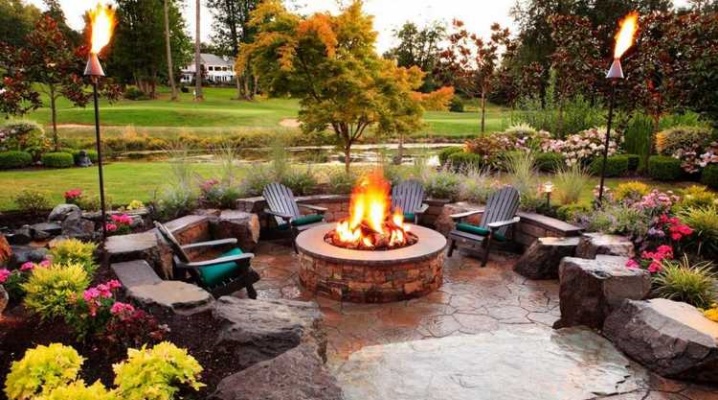
Owners of summer cottages or private houses know how it is necessary to light a fire on the site in order to burn dead wood, last year's leaves, dry tree branches and unnecessary garbage. In addition, on warm evenings, you want to gather your family at a table in the fresh air, cook some yummy food on an open fire, whether it be a shish kebab or baked vegetables. However, it is unsafe to make an open fire in the country house on the ground, it is even forbidden. Therefore, it is worth considering options for arranging a hearth laid out of stone, be sure to be guided by the legal rules for its construction and in full compliance with the requirements of the relevant services.
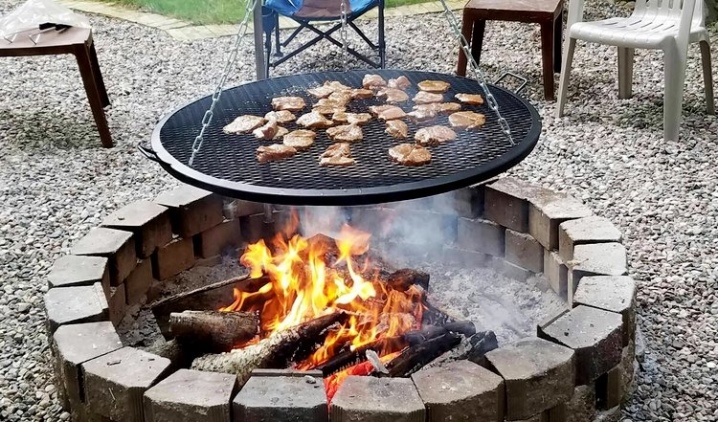
Features and requirements
A stone fireplace is a rather bulky structure on the street, with its base dug into the ground. The base can be made of both stone and any other refractory material, including in the form of a foundation made of concrete or masonry. And the fire bowl itself consists of two elements: a metal bowl and its decoration (stone or external brickwork).
Of course for such a structure, in most cases, it is necessary to find a permanent place of "registration", since stone fireplaces are considered stationary devices. Even if you move only the upper part of the fire pit - the bowl with the decoration itself - you still have to mount a base or foundation in a new place.
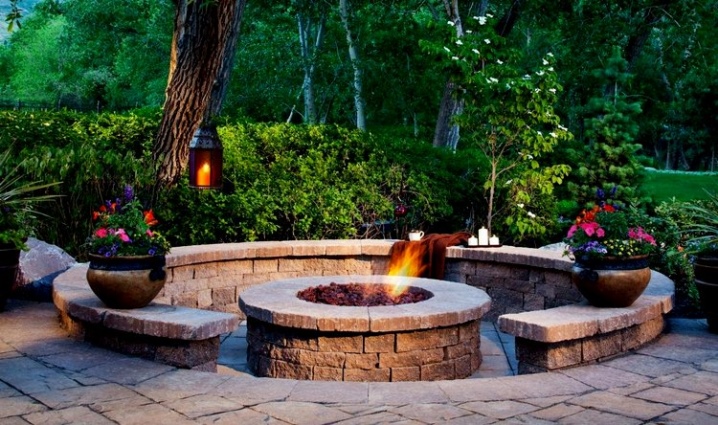
The requirements for such structures in the country or on the territory of a private house are mainly based on considerations of fire safety measures and consist in the following points:
- the place for making a fireplace should be located at a distance of at least 5 m from any buildings;
- the platform under the hearth is made of non-combustible materials;
- to the nearest shrubs and tree crowns available on the site, there should be at least 4 m from the fireplace site;
- free space with a distance of 2 or more m is required around the hearth;
- maintain a sufficient distance to the neighboring area so that they do not get in the way of smoke;
- when burning garbage, make sure that it does not contain explosive substances and objects (for example, slate debris that explode when heated should be removed from the garbage);
- it is forbidden to use kerosene and gasoline to maintain or kindle a fire - their volatile vapors can lead to an explosion, from which people can be injured and a fire can start.

Species overview
There are a huge number of varieties of a fireplace made of stone. They are classified according to several criteria:
- by location;
- by the way of execution;
- by material;
- by form;
- by appointment.
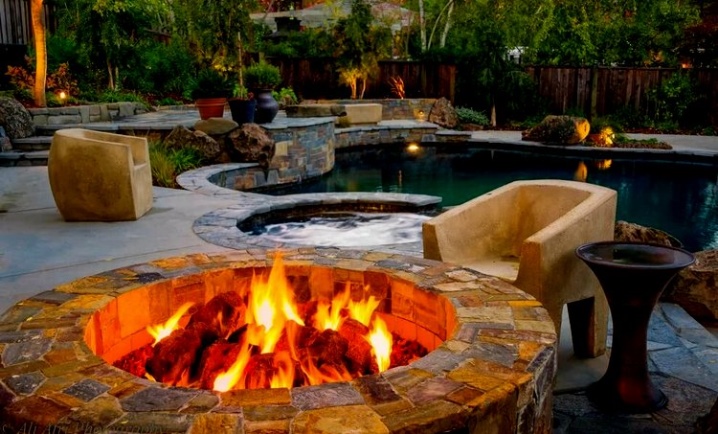
At the location, the bonfire can be outdoor, installed anywhere in the summer cottage in the open air (in the garden, next to the house, on the pond, by the pool), and covered, protected from adverse weather conditions (under a canopy, in a separate building , inside a beautiful gazebo).
Separately, it is worth highlighting the foci by the method of execution on the ground: ground (surface) and buried.
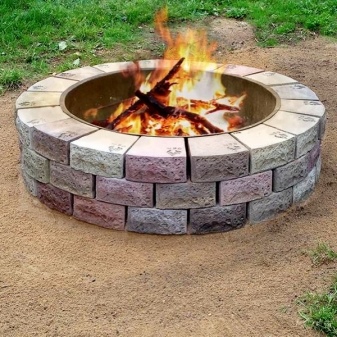

For the former, it is important to make a slightly deepened platform: either steel or concrete. The main thing is that the base is fireproof. The base can be decorated with tiles, natural stone or other non-combustible finishing material. For in-depth options for bonfire sites, sites of stone, concrete, steel are also arranged, but only the hearths themselves are not placed on the surface of these sites, but go deeper into the ground. Depending on the conceived design, such hearths can be located with the upper edge of the bowl at the level of the surface of the platforms or slightly higher, and also take shape in a lowered plane, where the descent is equipped with 2-3 steps.
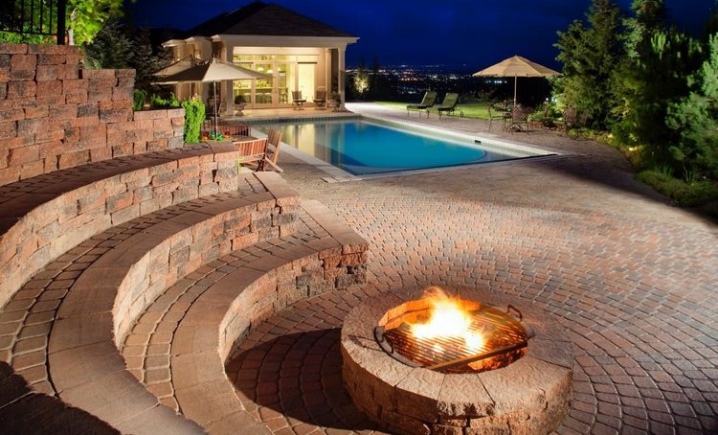
The hearth itself is made:
- from natural (wild) stone;
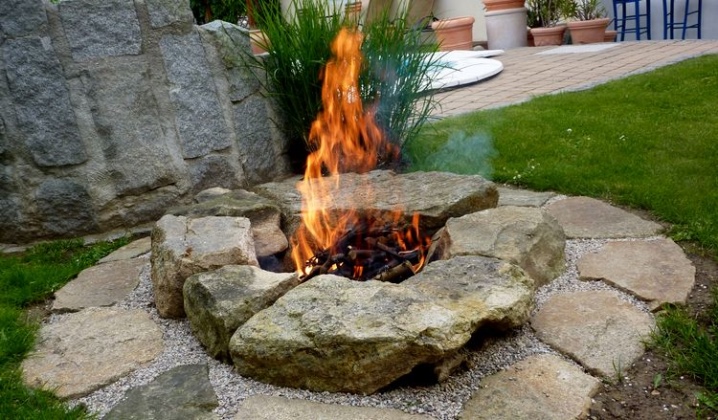
- from refractory bricks;
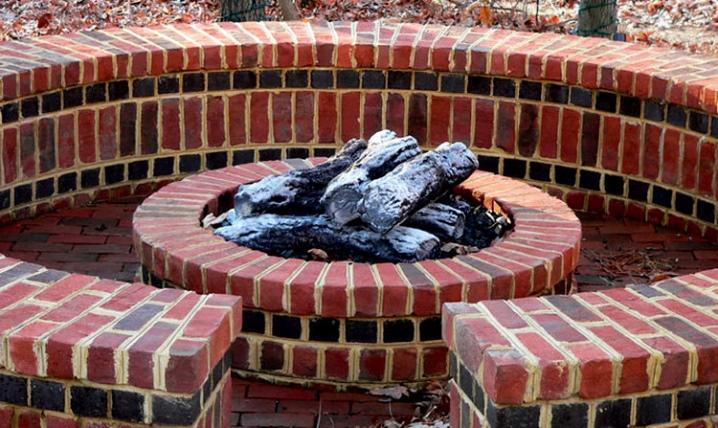
- from fragments of aged concrete;
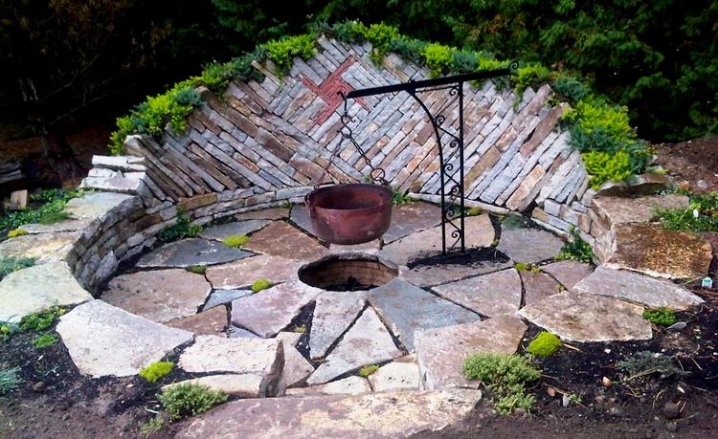
- cast iron;
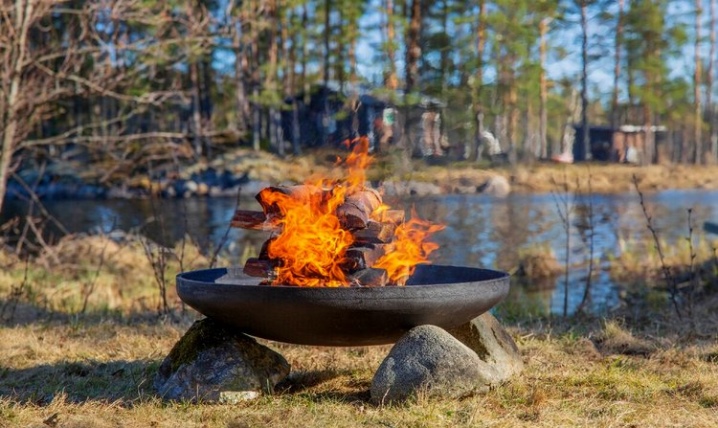
- of steel.
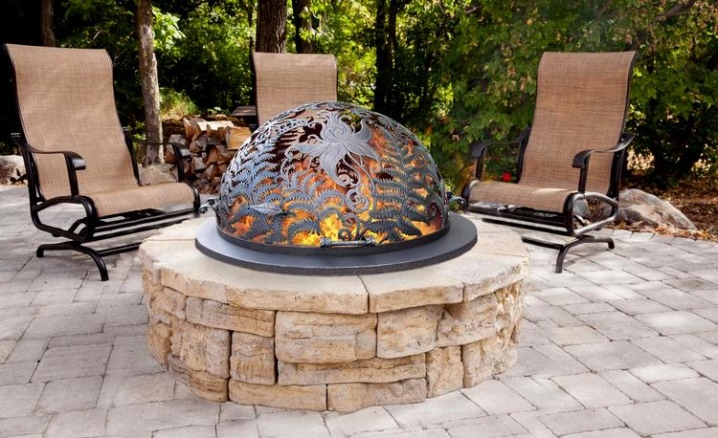
The last 2 options for surface types of fireplaces require finishing from a heat-resistant material that is not afraid of high temperatures. It can be the same natural stone or refractory brick.
The shape of a fire pit can be:
- round;
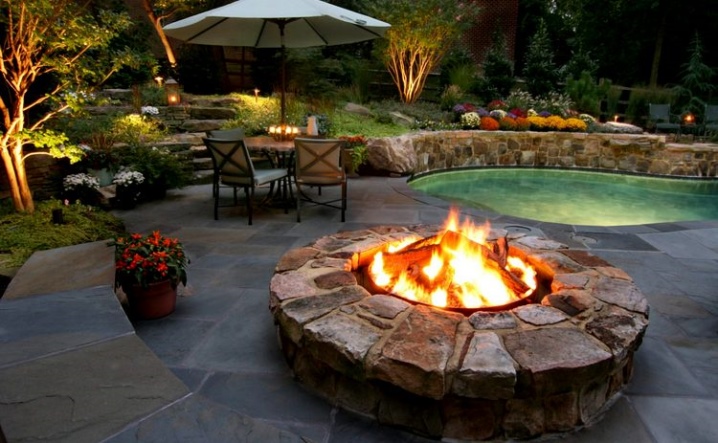
- semicircular;

- oval;
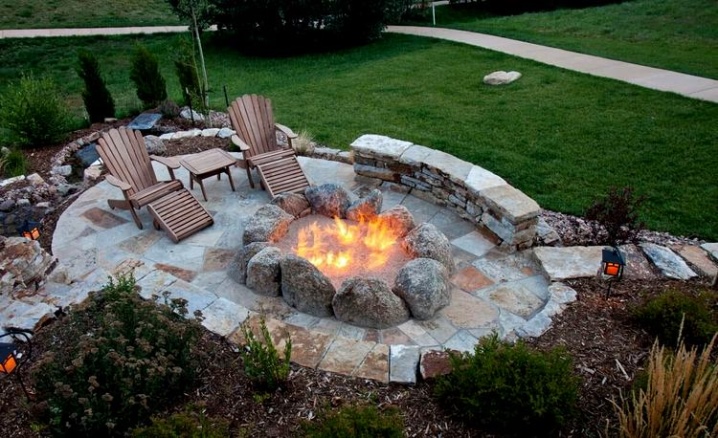
- rectangular;
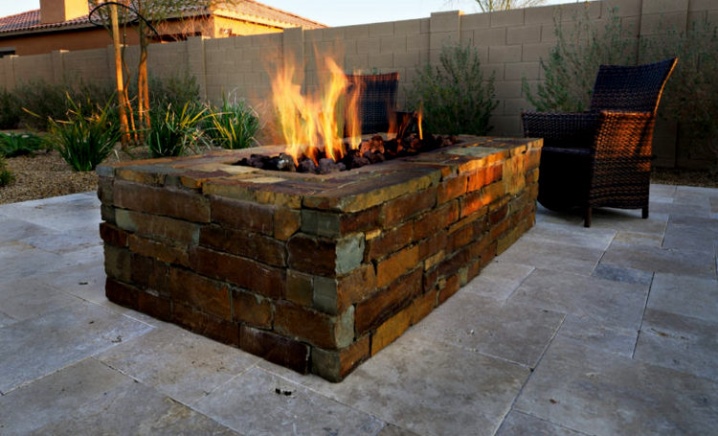
- square.
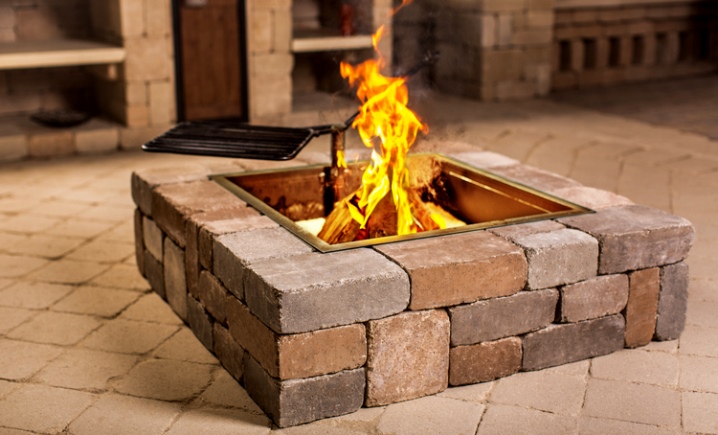
Most often, either round or square fireplaces are made - they are the easiest to make.
By design, such structures are divided into 2 types: separate and combined. The former are intended only for small parties or gatherings by an open fire with barbecue or tea. The latter combine a bonfire with a barbecue area or patio, which expands the possibilities for organizing noisy parties with relatives and friends.
How to do it yourself?
Making a fireplace yourself is not difficult for a skilled owner of your own site. For a beginner, it will be easier to complete a ground hearth.
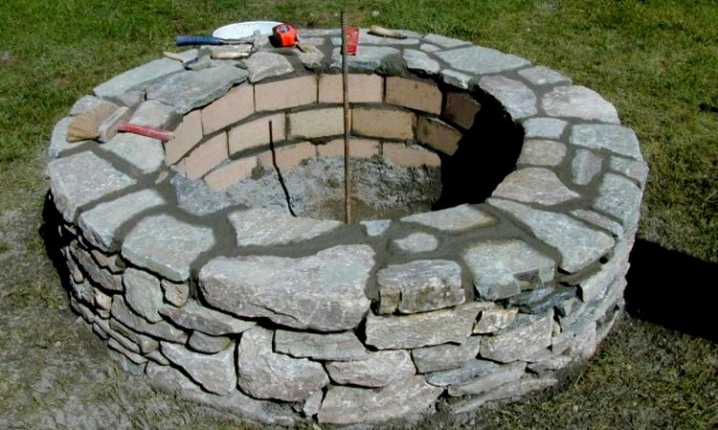
Let's give an approximate algorithm for such work.
- Decide on the location of the fireplace. Do not forget about fire safety measures and strict adherence to other rules and regulations when constructing such a structure.
- Plan the size of the site and the hearth itself, taking into account not only gatherings for family members, but also possible parties with friends and relatives.
- Dig a pit 30–40 cm deep, level the surface.
- Fill the resulting hole 15–20 cm with sand, tamp the layer.
- Then, on top of the sand, crushed stone is poured into the pit with tamping to the level of the surface surrounding the site.
- Next, the hearth of the selected shape is laid with a slight deepening of its base into the surface of the rubble. The hearth is laid out from stone or brick. If a cast-iron or steel hemispherical bowl is used, then the masonry is carried out according to its dimensions. The masonry is fastened with a refractory mortar.
- The arrangement of the fireplace is completed by finishing work: you can put paving slabs, clinker, stone on a pillow of sand and crushed stone, using also a refractory mortar.
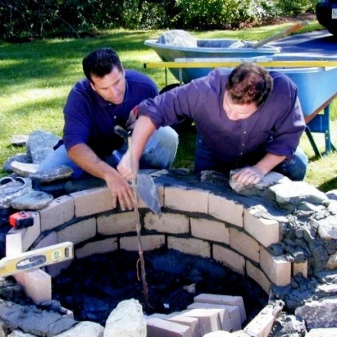
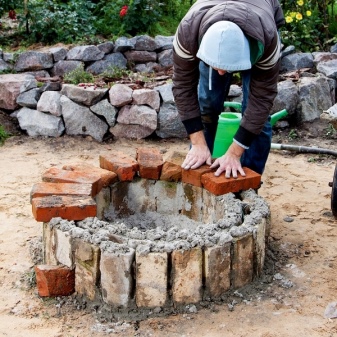
Seating places in this recreation area can be arranged both on the site and outside it. Outside the site, it is worthwhile to provide stationary benches with tables and awnings.
Examples in landscape design
A few examples of hearths designed with regard to the surrounding landscape:
- a deepened hearth erected against the background of the surrounding forest park;
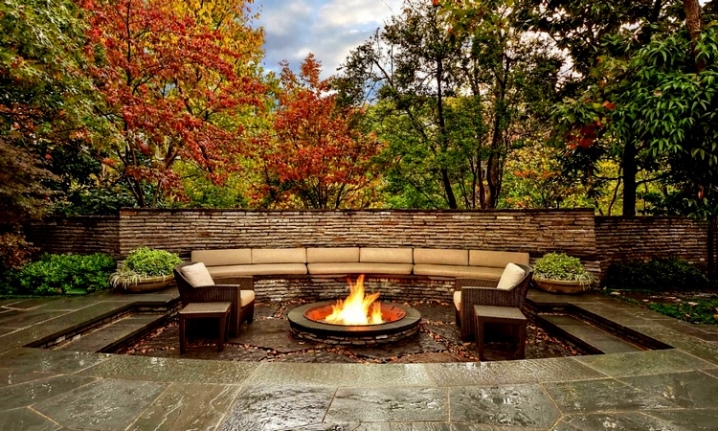
- the superficial hearth adjacent to the adjoining terrace is in perfect harmony with the surrounding nature;

- a deepened fireplace with steps and a seating area made of wild stone fits in style not only for a residential building, but also for a gazebo at a distance, and a quiet grove around.
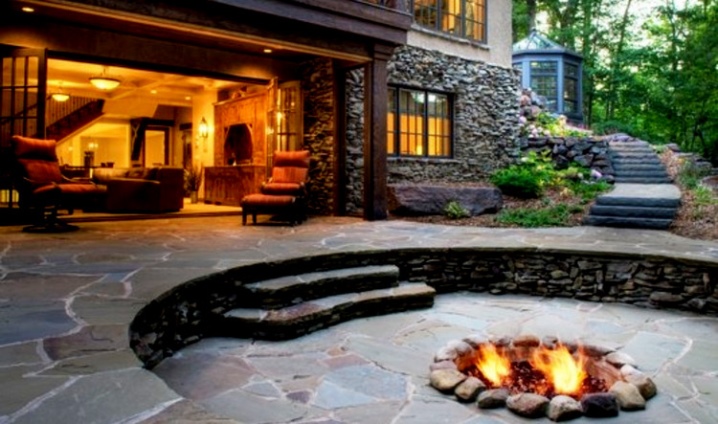
For more information on stone fireplaces, see the video below.































































The comment was sent successfully.